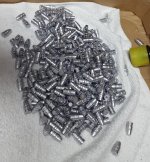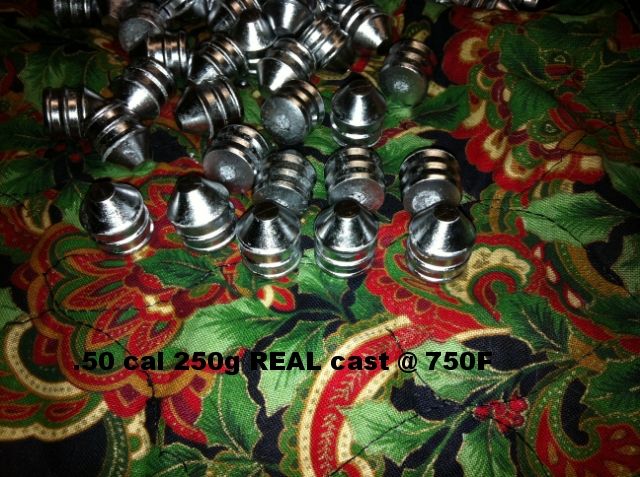I like to have flexibility in my ammunition. Store bought factory ammo doesn't let me load whatever caliber and whatever load I'm in the mood for. Lead ingots, powder, brass and primers let me make whatever I want whenever I want at a price that is equal to or less than 22LR at the present time (5 cents a round for centerfire cartridges no matter what the pistol caliber and 6-11 cents per round for rifle cartridges).
By far, the bullet is the most expensive part of reloading once you already have the brass. Typically you spend 10-50 cents per round for commercial bullets. If you can get lead at $2/pound, you can make 500 115 grain bullets for $16.50 or 500 230 grain bullets for $32.86. That's half the typical cost of commercial lead bullets plus you can taylor your bullet size to eliminate all leading in your barrel which you cannot do with commercial cast bullets. Plated or FMJ bullets would cost even more.
When I get a new caliber gun, I typically spend about $40 for a new 6 cavity mold which means the mold pays for itself after about the first 1000 bullets. I've shot about thirty thousand 40 S&W bullets in the past 4 years which cost me about $1730.
In lead, I spent $660. If they were commercial cast bullets at $0.08 each it would have been $2400. For FMJ at $0.25 each, it would have been $7500. There's no way I could have afforded an extra $6000+ for bullets in this hobby and that's not counting all the other calibers I've been able to shoot.
The difference in cost between a 115g lead 9mm bullet and a 230g 45ACP bullet is just in the lead. So a $0.03 9mm bullet ($2/lb lead) would cost 6 cents for the 45ACP bullet. The primer would cost the same and the powder might cost 1 penny versus 8/10th of a cent if you went from 4 grains to 5. 45ACP typically costs a lot more than $2 extra for a box of 50 vs 9mm but if you cast and reload, that's the difference. If you use a 200g or 175g 45 ACP bullet, the cost is even lower.
As for lead, right now you can get "scrap" lead very easily for closer to $1/pound if you look at the reloading ads on most gun boards. For handgun target practice, you can use the typical "range pickup ingots" and not worry about harness, adding tin or anything else. Salvaged boat keel lead is a little more sketchy because you don't know what garbage is in that and the seller typically gets it for free.
There is a learning curve for casting just as there was for loading, but the good thing is any failures simply go back into the pot and you are out nothing more than a few seconds of your time. Even mess ups in loading like shaved bullets, crooked seated bullets or pulled bullets that get mangled simply go back into the pot to be remelted. You have no qualms about making test cartridges or test seating a number of bullets to see if they chamber because no matter what happens to the bullet, they can always go back into the pot for the next casting session.
Casting opened up a lot of doors to new aspects of shooting for me including muzzleloading,
subsonic rifle shooting, trying out all sorts of rifle bullets
and casting/loading/shooting slugs in shotguns.








